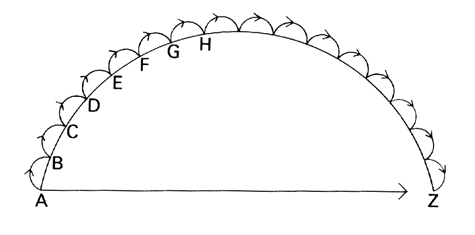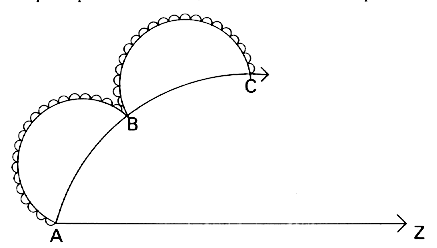

From An Anatomy of Drama by Martin Esslin.
No single theorist has had more of an impact on theater than Aristotle, whose Poetics outlined a formula for playwriting that dominated the field until the rise of Bertolt Brecht and Gertrude Stein. Even today, his basic concepts remain: the three unities (time, place, action) and a beginning-middle-end structure. Any discussion of dramatic theory must begin from these concepts, particularly the latter. The idea of beginning, middle and end is a direct ancestor of the classical 5-act structure, codified by the French Academy, and its younger brother, the "play in 3 acts." The use of odd numbers of acts allows a play to progress geometrically and has led to a quasi-geometric way of studying dramatic action (arcs of narrative, rising and falling action, etc). While this is far from symmetry, it is a way of splitting a play down the middle and an acknowledgment of at least a proto-symmetrical structure.
Shakespeare is an interesting case study because he unconsciously incorporates Aristotelian structure without ever claiming Aristotle as a model or source. Because of his violation of the three Unities, the Romanticists even went so far as to set Shakespeare in opposition to Aristotle, but a closer look at his work reveals an heavy reliance on Aristotle's model.
While Shakespeare uses 5-act structure, that alone does not guarantee an Aristotelian influence. It is the way that he uses the structure that gives him away. He could have begun Hamlet with the death of Polonius, in which case his audience would have missed out on much of the young prince's psychological self-flagellation and dissmissed Hamlet as rash and vicious. But by placing the murder in the third act, we see Polonius as a snake in the grass and Hamlet as the hero. Polonius' death is the beginning of a steady stream of incidents which push Hamlet further and further along toward direct action against his uncle. It is the "inciting incident" of the tragedy. Shakespeare tends to put the first explosion of passions (in tragedy, almost always a death) in the third act. In Romeo and Juliet Mercutio kills Tybalt in the third act. In the third act of Macbeth, Macbeth goes beyond regicide to paranoid aggression in the slaughter of Banquo. And in King Lear, Lear's storm rages and Gloucester's eyes are plucked out all the third act. The third act in Shakespeare is usually where the plot thickens and the road back is blocked off. These middle moments are not climaxes, but in a graph of the plays' momentum they represent high points, a line of reflection where the actions of the first two act begin to have their effects, where one can see that "something wicked this way comes."
The concept of the "well-made play" came about in France in the mid-nineteenth century as a challenge to both romanticism and the neo-classicists of the French academy. Its seminal figure, Eugene Scribe, wrote an estimated 400 plays, which tended to be naturalistic, comedic and composed in three acts. Despite Scribe's prolific work and widespread popularity, the formula for the well-made play was not laid out clearly until after his death, when Francisque Sarcey published his Essays on the Aesthetics of Theater (1876). The main concept defined by Sarcey was the scene a faire, or obligatory scene. It is a scene of recognition or reversal -- to use Aristotle's terms -- in which the events of the play begin to unravel. It is the antithesis of the "inciting incident" which sets the conflict in motion; it is the crisis that leads directly to the climax. Interestingly, writers of well-made plays tended to place their obligatory scenes approximately 2/3 of the way through at what has come to be called the "Golden Section."
Martin Esslin gives a much clearer explanation of well-made structure in his book An Anatomy of Drama. He sees the plot as an arc which leads the characters and audience from point A to point Z. The individual acts are smaller arcs which ride on top of the main arc, and the scenes are even smaller arcs which ride on top of the acts. Formulated in this way, the well-made play is a lace-like fractal that has symmetry about a line through its scene a faire. This does not hold true, however, if the obligatory scene is shifted to 2/3 of the way through, in which case the main arc of the play seems to replicate the beginnings of a Golden Spiral.


From An Anatomy of Drama by Martin Esslin.
Page author: Max Dana